Abstract
Tobramycin pharmacokinetics is usually described by a one-compartment model, but this model fails to account for both the incomplete urinary recovery and prolonged post-treatment persistence noted with this drug. We examined the multiple-dose behavior of tobramycin in 35 treated patients with stable renal function, using peak and trough serum concentrations, urine recovery, and postmortem tissue analysis. Serum concentrations rose slowly throughout treatment and declined in two phases after the drug was stopped. The first-phase half-life correlated well with renal function, but the second averaged 146 h and was poorly related to creatinine clearance. A two-compartment model was used to describe the biphasic decline in serum concentrations and to calculate the amount of drug in the tissue compartment at all times during and after treatment. Predicted tissue amounts rose continually throughout treatment in all study patients. In 5 patients, the total amount of tobramycin in the body after the final dose was recovered in the urine, but urine had to be collected for 10 to 20 days to achieve complete recovery of the drug. In four patients, the predicted tissue amount was recovered from postmortem tissues. Regardless of the dose, tobramycin accumulated in the tissues of all patients receiving this antibiotic. The two-compartment pharmacokinetic model explains both the rising peak and trough concentrations during treatment and the detection of the drug in serum and urine long after the last dose.
Full text
PDF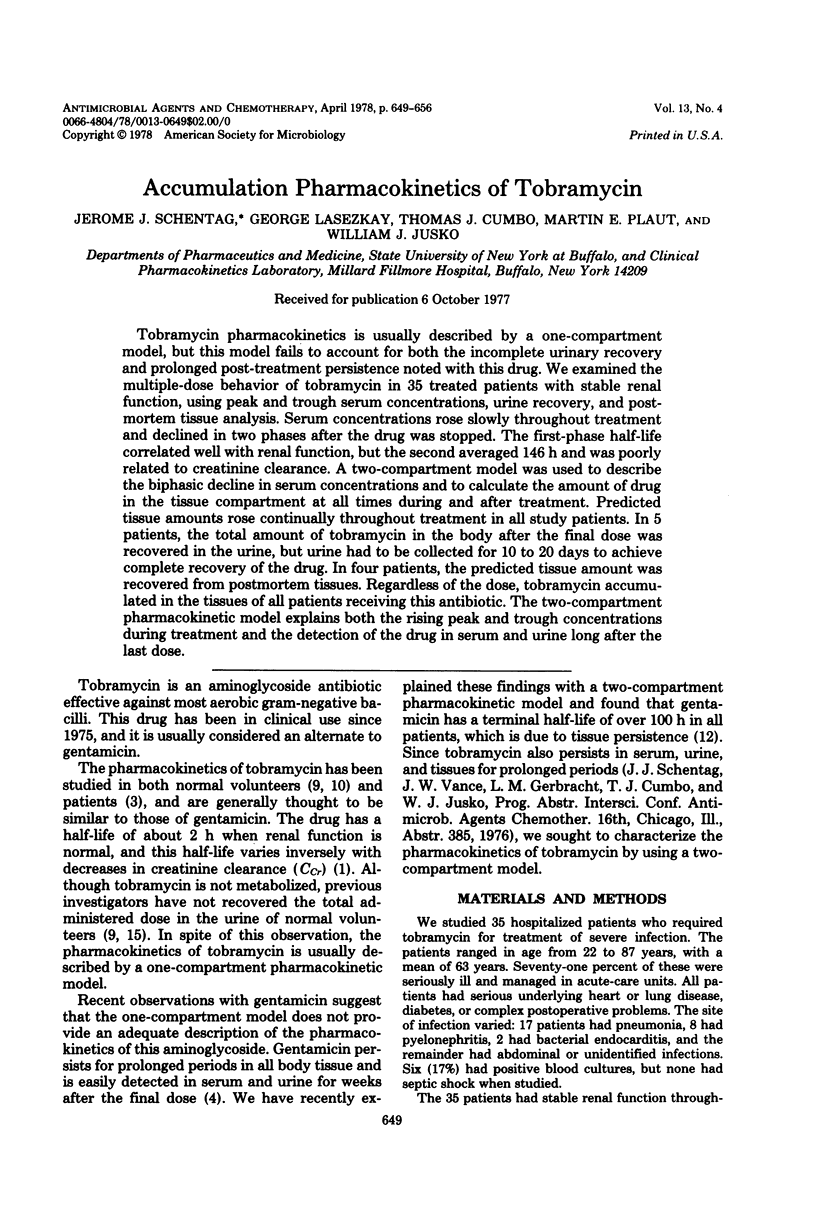
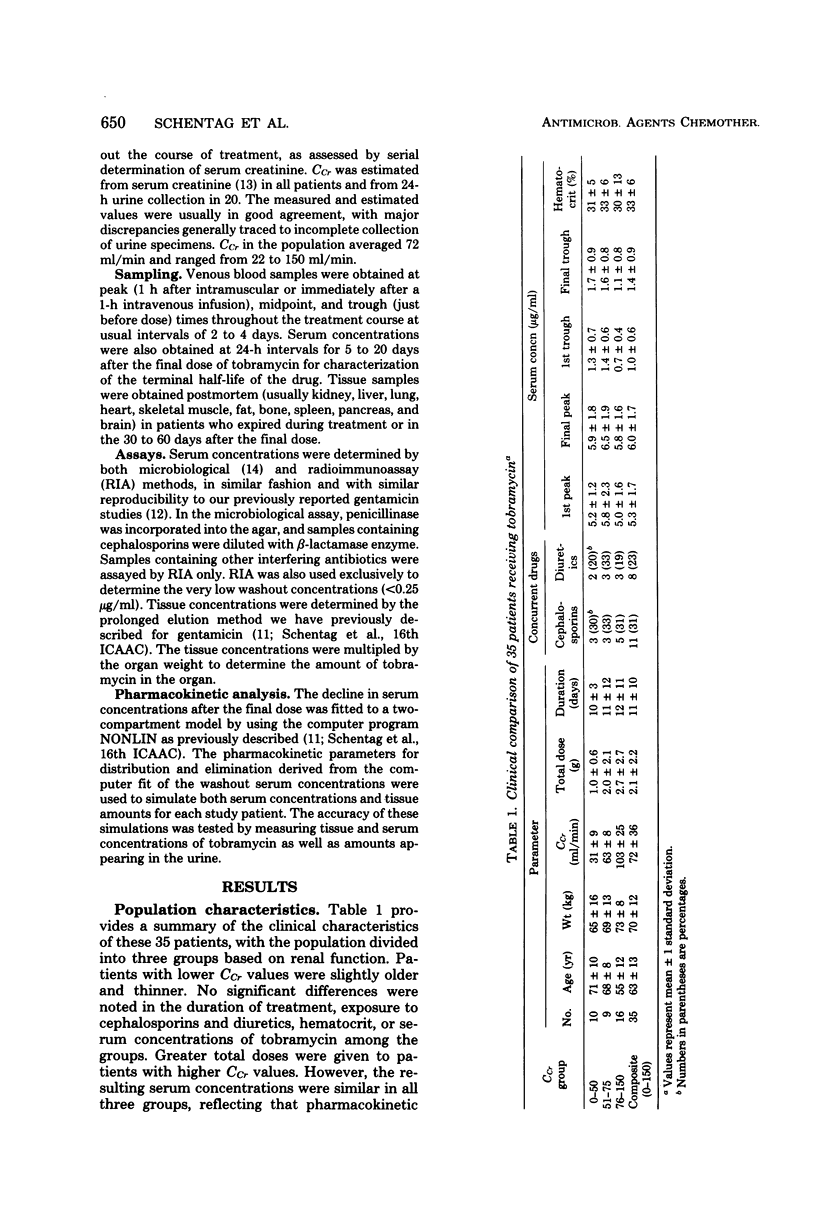
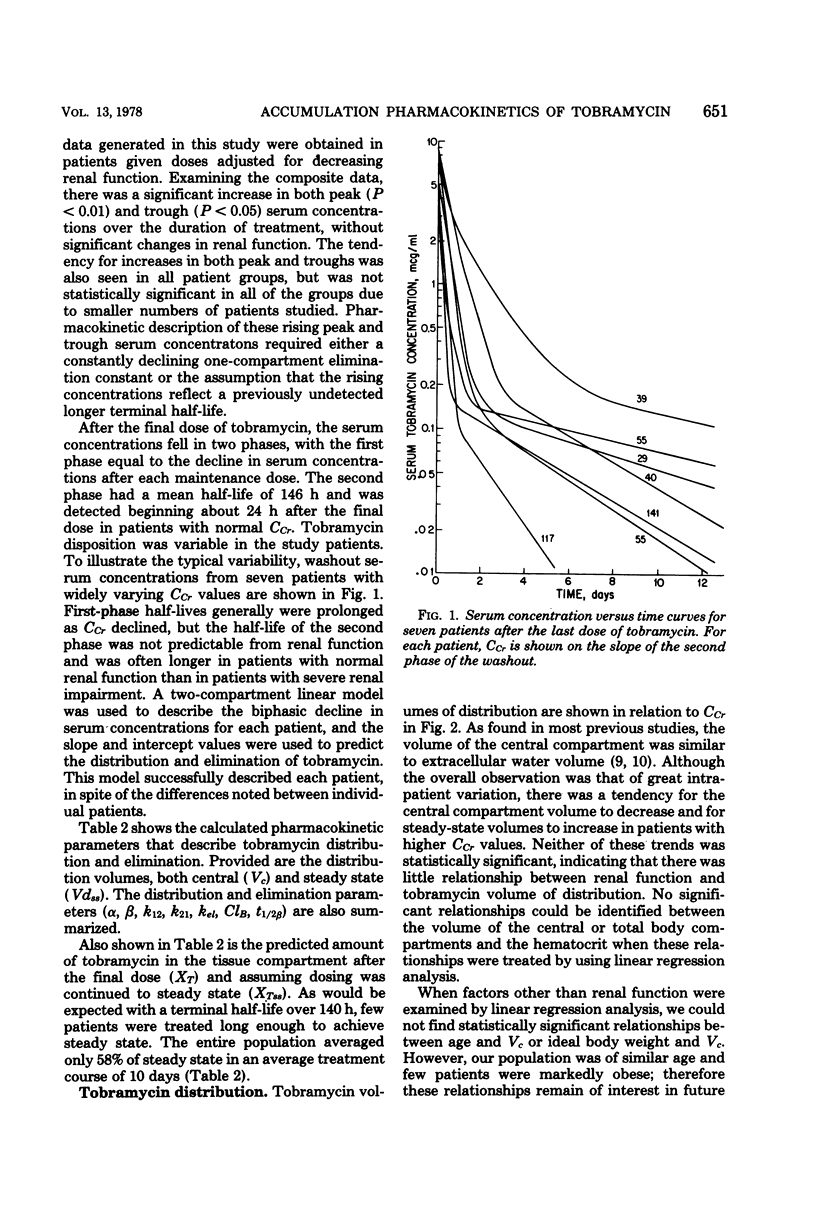
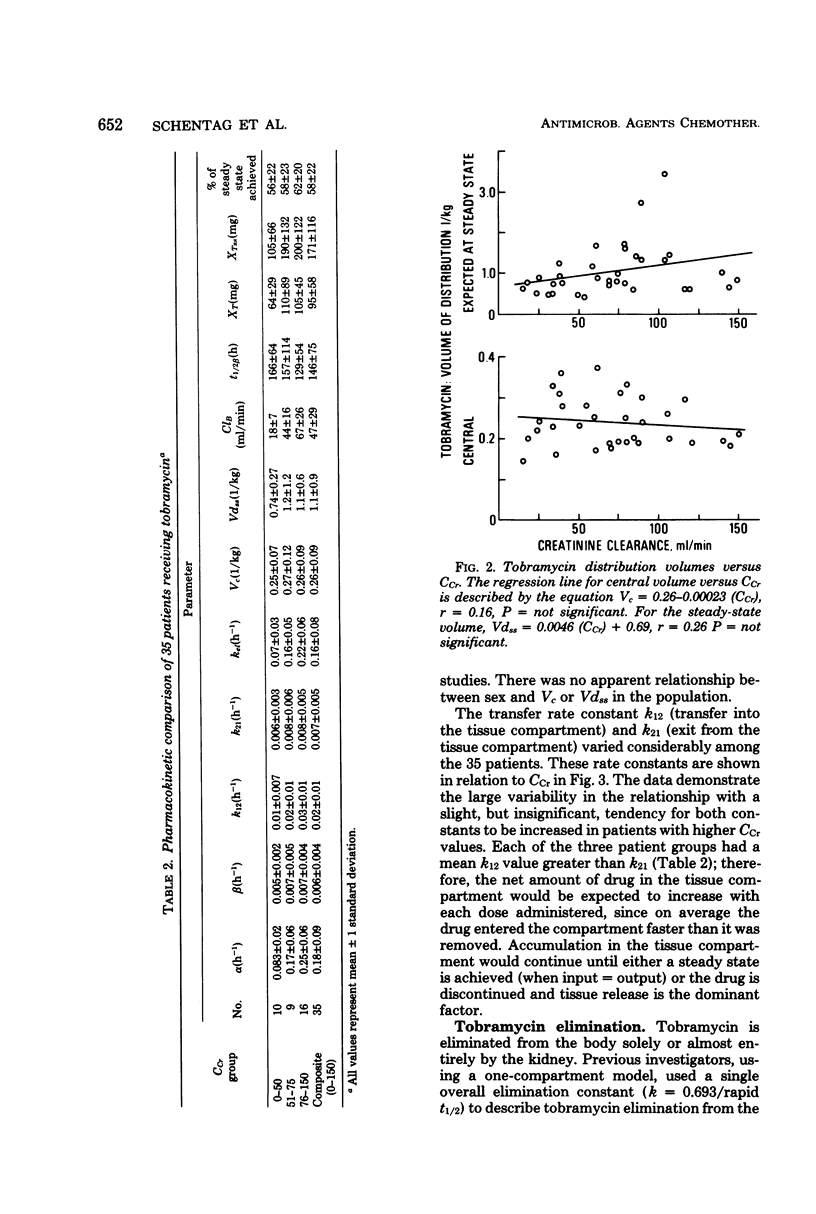
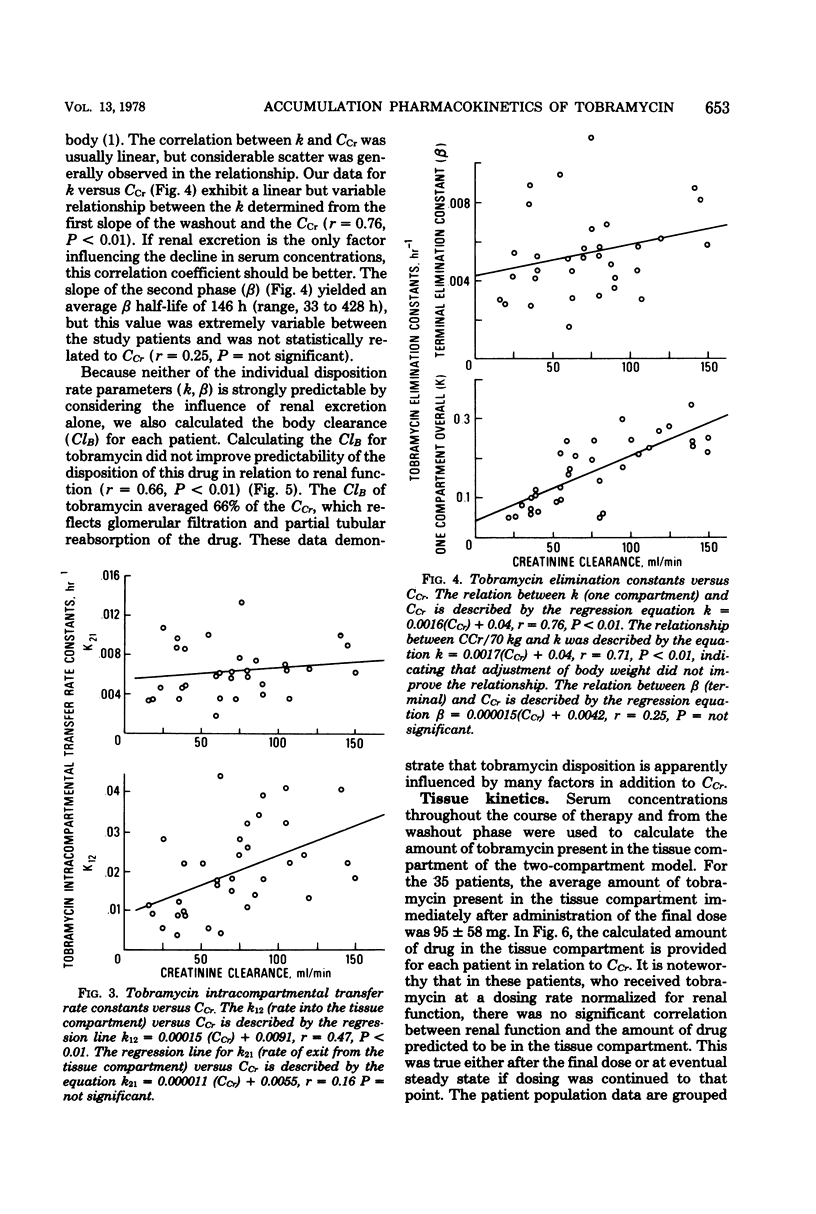
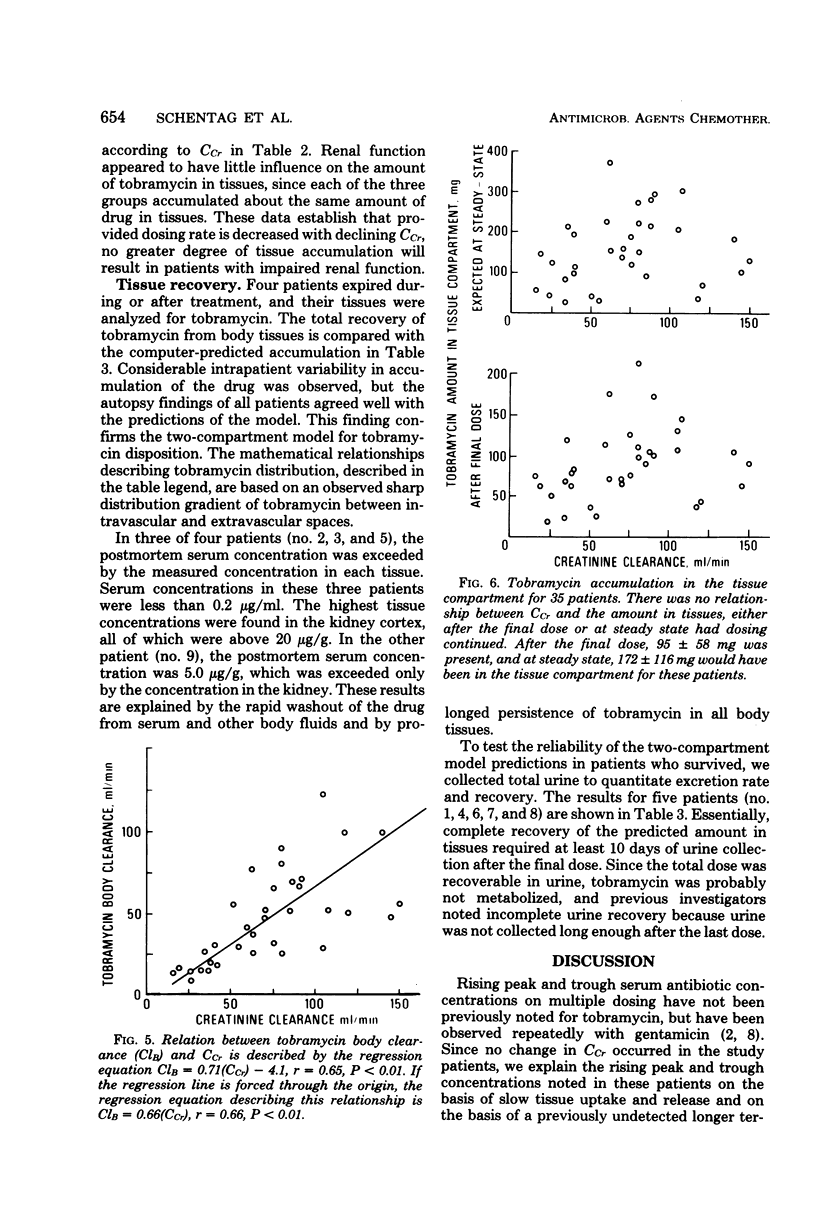
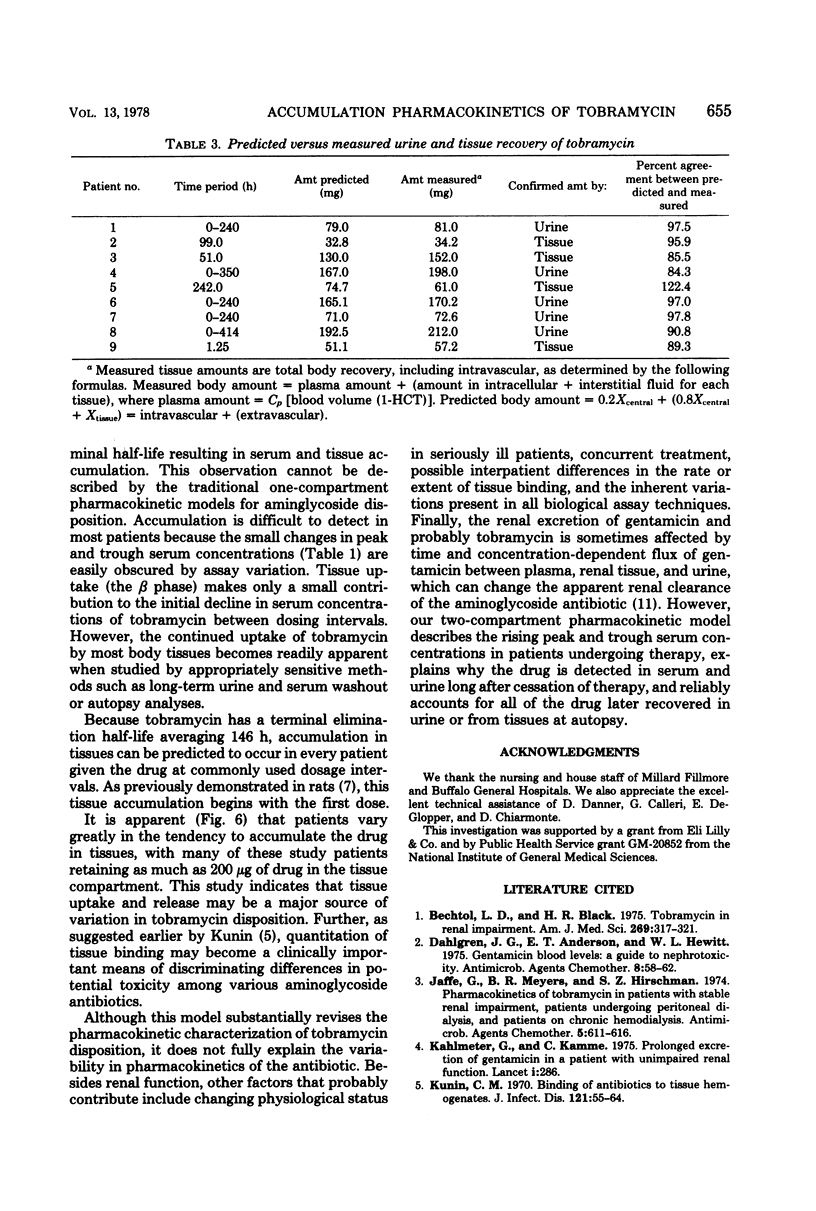
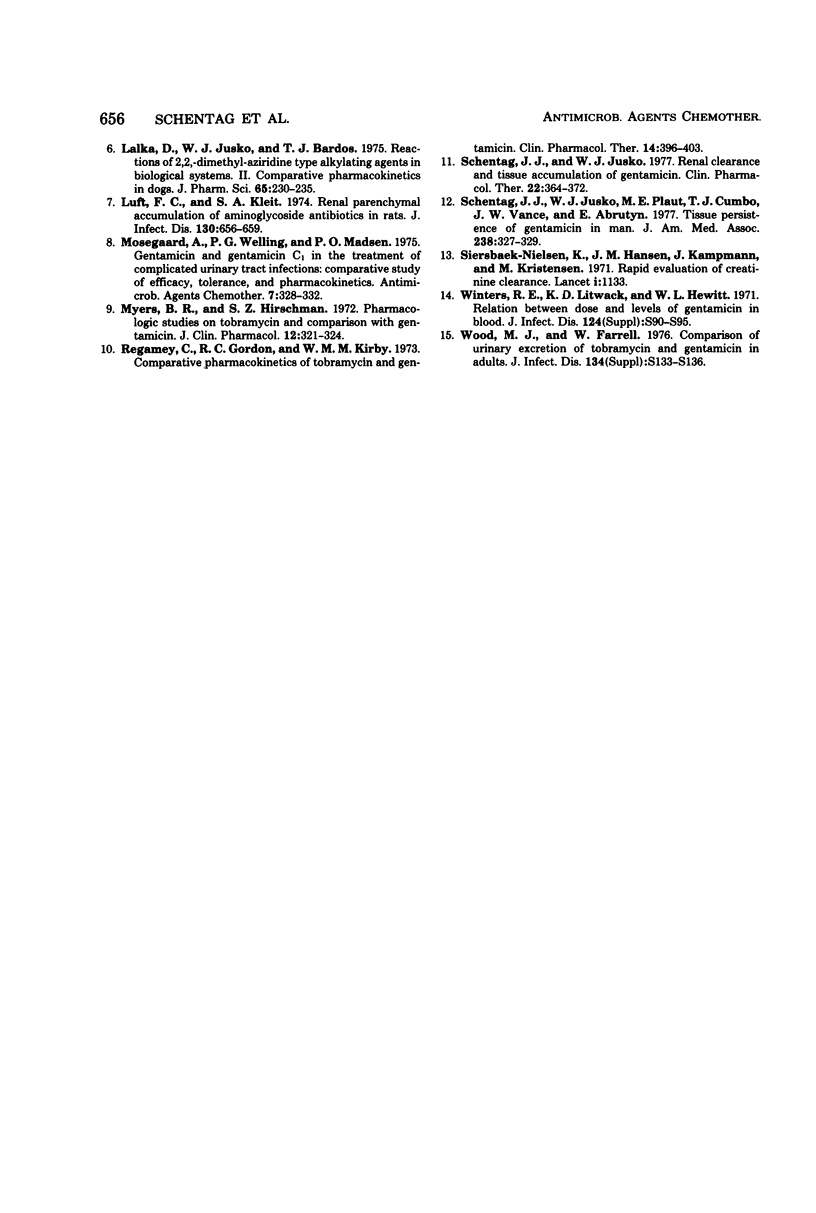
Selected References
These references are in PubMed. This may not be the complete list of references from this article.
- Bechtol L. D., Black H. R. Tobramycin in renal impairment. Am J Med Sci. 1975 May-Jun;269(3):317–321. doi: 10.1097/00000441-197505000-00004. [DOI] [PubMed] [Google Scholar]
- Dahlgren J. G., Anderson E. T., Hewitt W. L. Gentamicin blood levels: a guide to nephrotoxicity. Antimicrob Agents Chemother. 1975 Jul;8(1):58–62. doi: 10.1128/aac.8.1.58. [DOI] [PMC free article] [PubMed] [Google Scholar]
- Jaffe G., Meyers B. R., Hirschman S. Z. Pharmacokinetics of tobramycin in patients with stable renal impairment, patients undergoing peritoneal dialysis, and patients on chronic hemodialysis. Antimicrob Agents Chemother. 1974 Jun;5(6):611–616. doi: 10.1128/aac.5.6.611. [DOI] [PMC free article] [PubMed] [Google Scholar]
- Kahlmeter G., Kamme G. Letter: Prolonged excretion of gentamicin in a patient with umimpaired renal function. Lancet. 1975 Feb 1;1(7901):286–286. doi: 10.1016/s0140-6736(75)91197-6. [DOI] [PubMed] [Google Scholar]
- Kunin C. M. Binding of antibiotics to tissue homogenates. J Infect Dis. 1970 Jan;121(1):55–64. doi: 10.1093/infdis/121.1.55. [DOI] [PubMed] [Google Scholar]
- Lalka D., Jusko W. J., Bardos T. J. Reactions of 2,2-dimethylaziridine-type alkylating agents in biological systems II: comparative pharmacokinetics in dogs. J Pharm Sci. 1975 Feb;64(2):230–235. doi: 10.1002/jps.2600640208. [DOI] [PubMed] [Google Scholar]
- Luft F. C., Kleit S. A. Renal parenchymal accumulation of aminoglycoside antibiotics in rats. J Infect Dis. 1974 Dec;130(6):656–659. doi: 10.1093/infdis/130.6.656. [DOI] [PubMed] [Google Scholar]
- Meyers B. R., Hirschman S. Z. Pharmacologic studies on tobramycin and comparison with gentamicin. J Clin Pharmacol New Drugs. 1972 Aug-Sep;12(8):321–324. doi: 10.1002/j.1552-4604.1972.tb00174.x. [DOI] [PubMed] [Google Scholar]
- Mosegaard A., Welling P. G., Madsen P. O. Gentamicin and gentamicin C1 in the treatment of complicated urinary tract infections: comparative study of efficacy, tolerance, and pharmacokinetics. Antimicrob Agents Chemother. 1975 Mar;7(3):328–332. doi: 10.1128/aac.7.3.328. [DOI] [PMC free article] [PubMed] [Google Scholar]
- Regamey C., Gordon R. C., Kirby W. M. Comparative pharmacokinetics of tobramycin and gentamicin. Clin Pharmacol Ther. 1973 May-Jun;14(3):396–403. doi: 10.1002/cpt1973143396. [DOI] [PubMed] [Google Scholar]
- Schentag J. J., Jusko W. J., Plaut M. E., Cumbo T. J., Vance J. W., Abrutyn E. Tissue persistence of gentamicin in man. JAMA. 1977 Jul 25;238(4):327–329. [PubMed] [Google Scholar]
- Schentag J. J., Jusko W. J. Renal clearance and tissue accumulation of gentamicin. Clin Pharmacol Ther. 1977 Sep;22(3):364–370. doi: 10.1002/cpt1977223364. [DOI] [PubMed] [Google Scholar]
- Siersbaek-Nielsen K., Hansen J. M., Kampmann J., Kristensen M. Rapid evaluation of creatinine clearance. Lancet. 1971 May 29;1(7709):1133–1134. doi: 10.1016/s0140-6736(71)91873-3. [DOI] [PubMed] [Google Scholar]
- Winters R. E., Litwack K. D., Hewitt W. L. Relation between dose and levels of gentamicin in blood. J Infect Dis. 1971 Dec;124 (Suppl):S90–S95. doi: 10.1093/infdis/124.supplement_1.s90. [DOI] [PubMed] [Google Scholar]
- Wood M. J., Farrell W. Comparison of urinary excretion of tobramycin and gentamicin in adults. J Infect Dis. 1976 Aug;134 (Suppl):S133–S136. doi: 10.1093/infdis/134.supplement_1.s133. [DOI] [PubMed] [Google Scholar]


